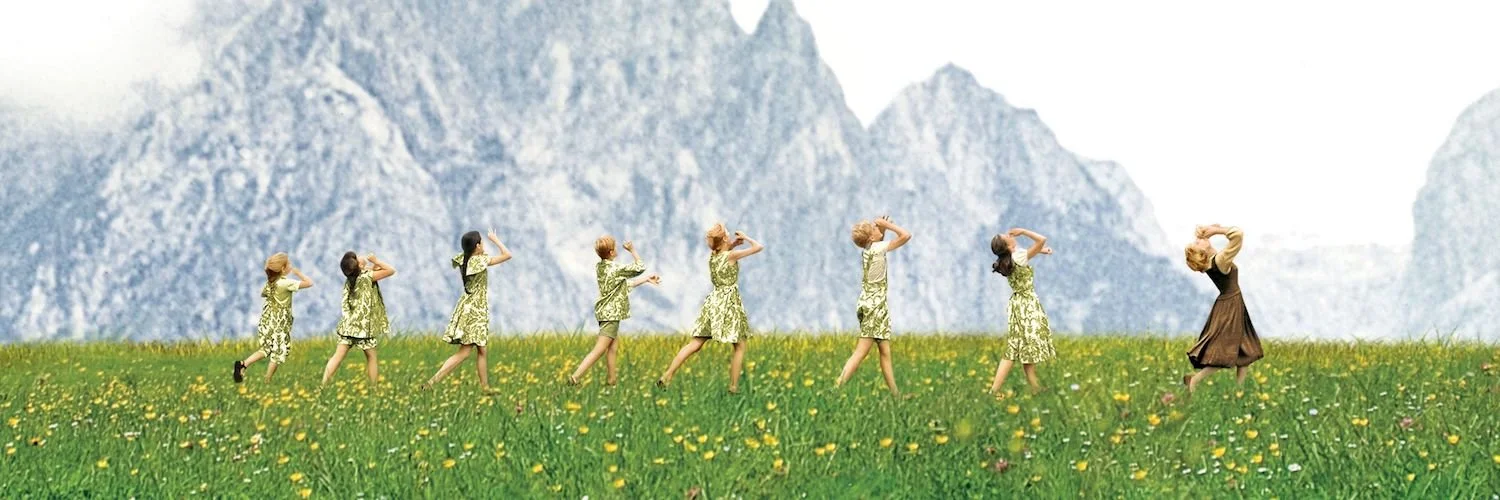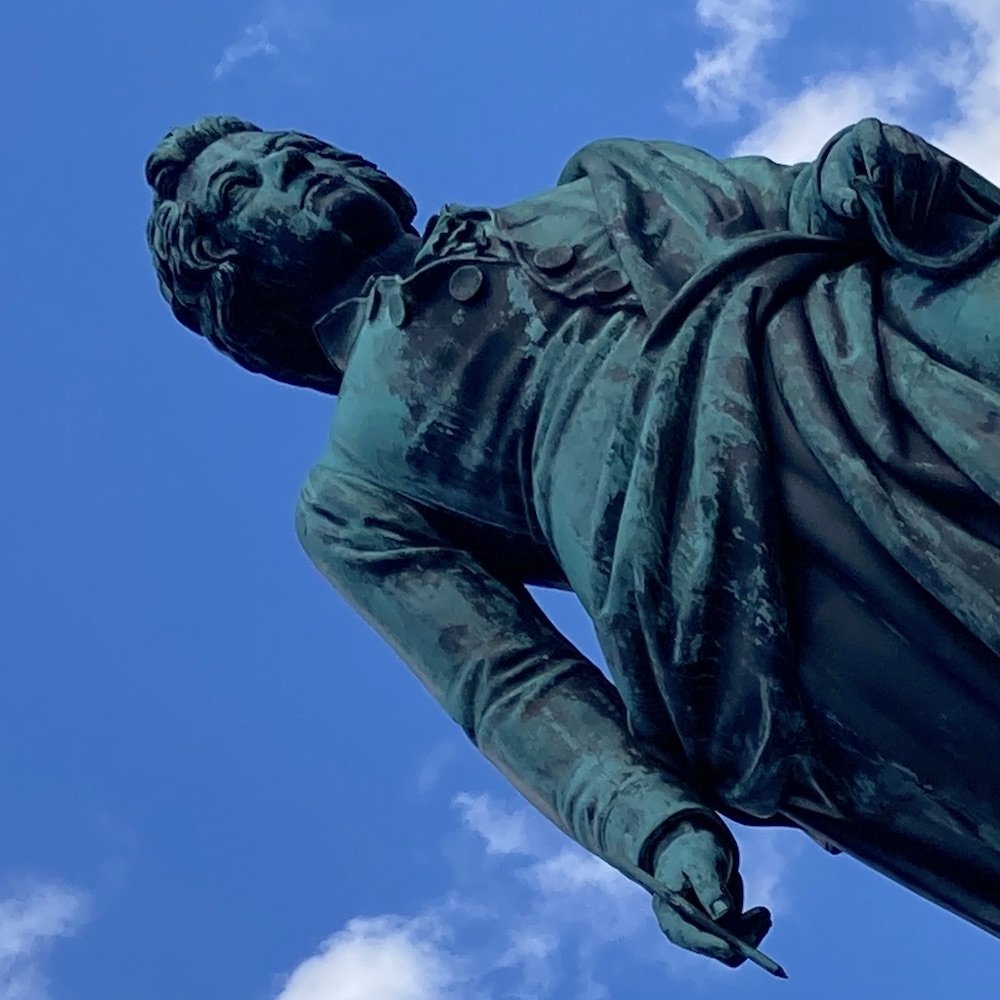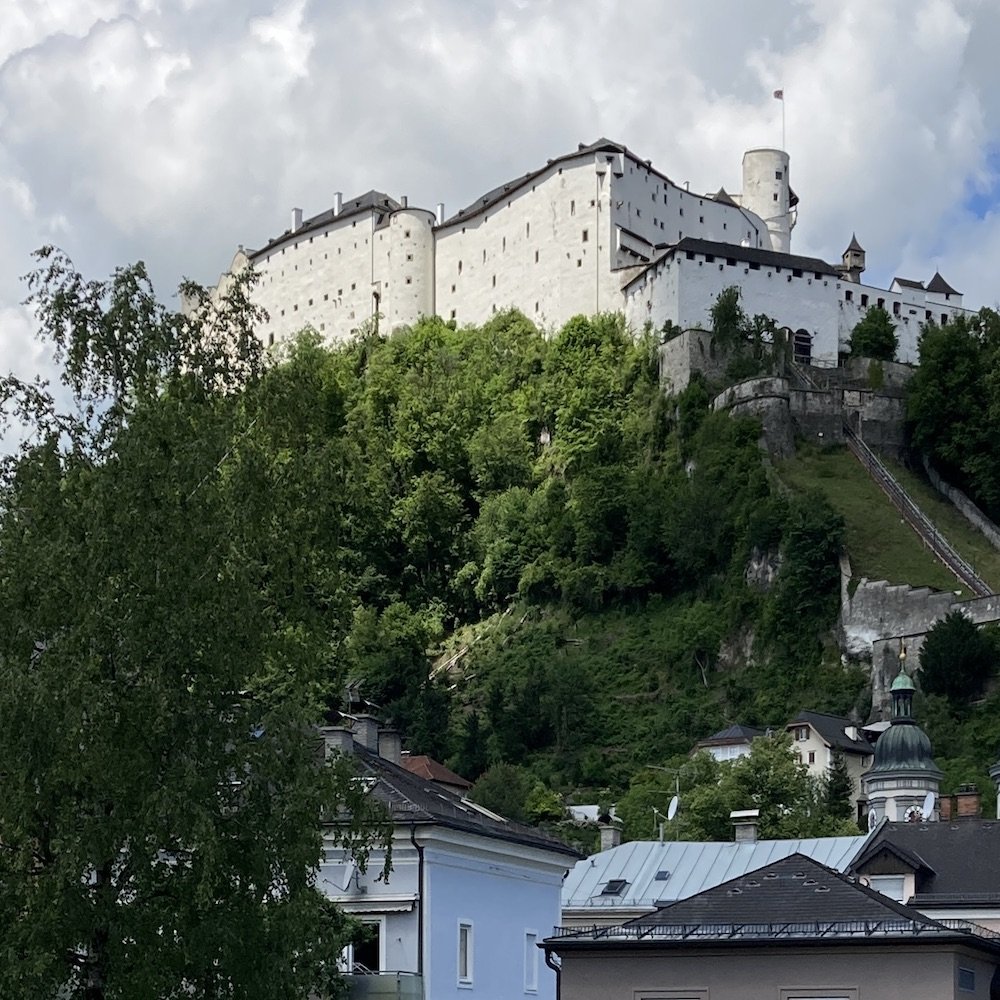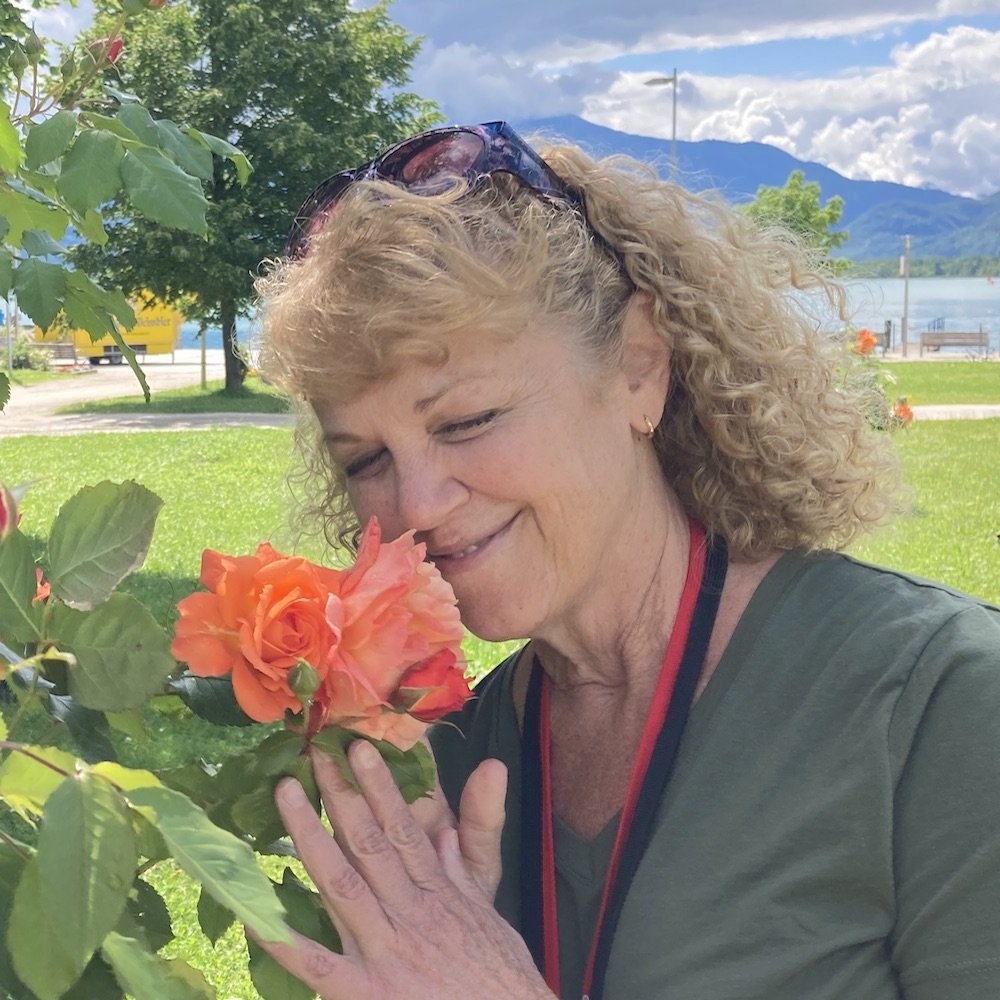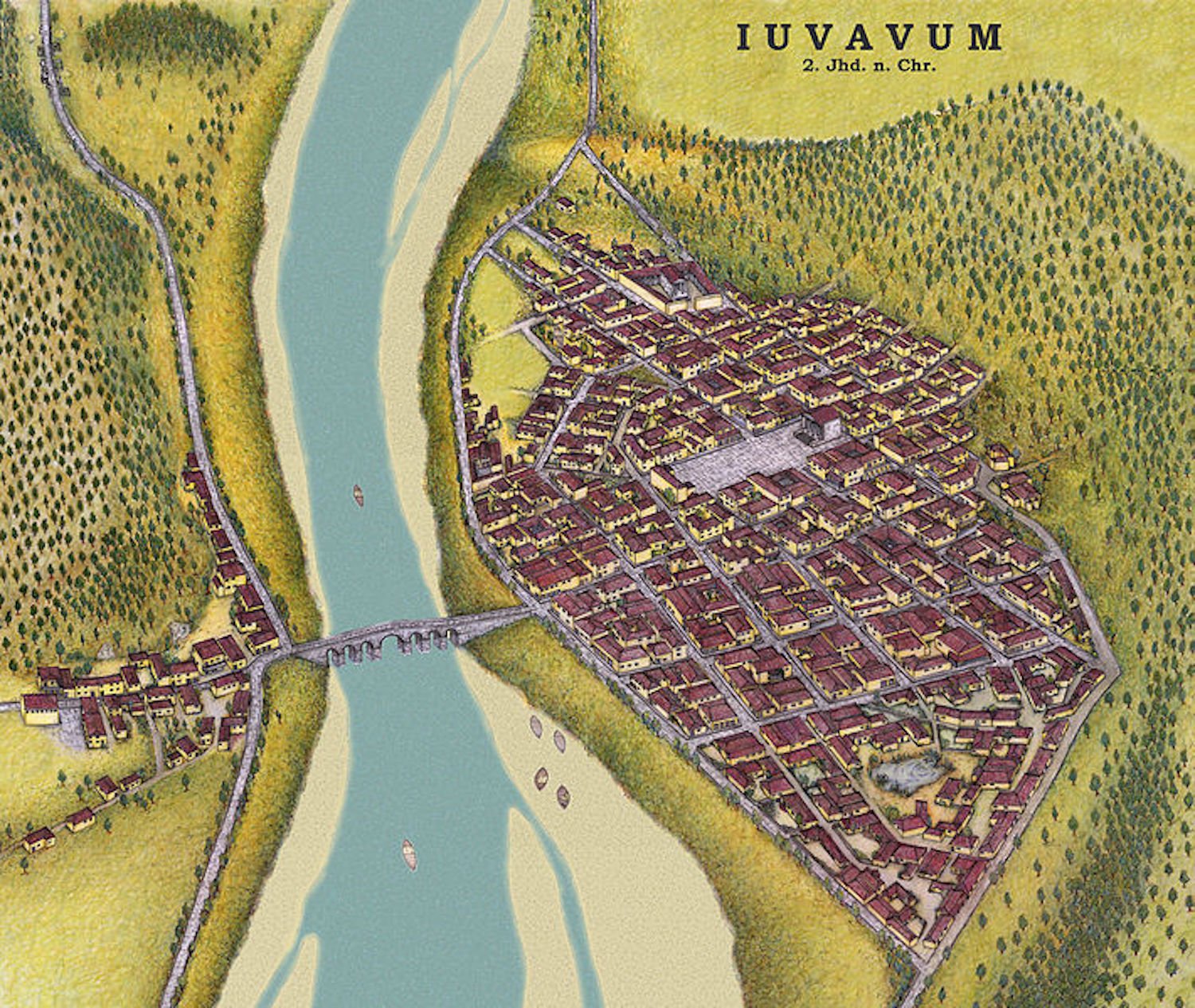On the occasion of my last Salzburg visit, more than 20 years ago, busloads of tourists bounced about the streets. They yodeled and tapped and merrily sang alle zusammen. Surrounded by the mountains and the lakes and the babbling brooks of Austria, it was easy (and fun!) to get into the von Trapp family groove.
The von Trapp family from The Sound of Music. 20th Century Fox (1965).
It was different this time.
The landscape was still there of course. So was the Nonnberg Abbey where strict sisters worried about how a solve a problem like Maria. And the Horse Fountain where Maria found confidence in me was still snorting.
But with COVID on the loose and the gap widening between the 1965 release of The Sound of Music and the present day, the place had a vibe that was less like climb ev’ry mountain and more like the lonely goatherd. I didn’t hear my favorite things even once.
It was disappointing. I’m such a sucker for musicals. Especially those that involve Nazis. Or cowboys. Naturally, Vicki is not a fan.
“Groups of people don’t just break into song and dance like that in real life,” my true crime lover insisted.
“That’s why musicals are so great,” I countered. “It’s something good.”
It was good that we had another agenda: we were hunting Romans.
Our quest had taken us down the Danube to the city of Linz. To get to Salzburg we bussed south, away the river. We were now maybe sixteen going on seventeen miles behind the Roman line of forts or limes that marked the boundary of the empire.
This geographical relationship is clear in the Tabula Peutingeriana. The Tabla is a map of the Roman road network, possibly dating back to the first century. There (and elsewhere in the literature) modern Salzburg appears under the name Iuvao or Iuvavum. More fully, it is Municipium Claudium Iuvavum, or “the municipality of Claudius” (= Emperor of Rome between A.D. 41-54 and mentioned by name in Acts 11:28). Iuvavum straddles the road running between Alps and the Danube.*
I circled the location of Iuvavum as it appear on Section 3 of the Tabula Peutingeriana. The river colored blue at the top of the image is the Danube. The river at the bottom (also blue) is the Po. The mountains in the middle, colored green, are the Alps. Image from here: https://www.euratlas.net/cartogra/peutinger/medium_zoom/original_map_10_1.html (accessed 7/8/2022).
The earliest remains of Iuvavum are piecemeal, as the city has been built and rebuilt many times. Some conclusions may be drawn, however.
Early settlers have been identified as Celts, the first to recognize the value of this location on the banks of the Salzach River. A fertile plain was backed by steep mountains, perfect for food and defense.**
The Romans followed. They built a prosperous community with a bridge, forum, temple, and triumphal arch. Consider this interpretive reconstruction of the city from the second century AD.
Roman Iuvavum. Image from here: https://commons.wikimedia.org/wiki/File:Reconstruction_Iuvavum.jpg (accessed 7/8/2022).
Vicki and I wandered the streets of Salzburg’s Altstadt. We nosed about the bakeries (thinking about Mama Z’s Pies). We admired the statue of the composer Wolfgang Amadeus Mozart (let’s really talk about the sound of music now!). We set on a bench and ate döner kebabs (a Turkish delight that never gets old) and window shopped in a few stores (and resisted the urge to buy a dirndl and lederhosen.).
We found the Residenzplatz and its splendid horse fountain, the Residenzbrunnen. Footers excavated in the 1950s suggest that a Roman triumphal arch once stood somewhere in the yard. Nearby was an altar to Jupiter and the gods.
The sweet stroke of a violin drew us from the fountain into a nearby square. There we found ourselves facing the Salzburg Cathedral. It, too, was musical. The previously mentioned arch and altar along with large stones under the cathedral suggest that this was the center of the Roman community and the place of its public buildings and forum. This baroque-style facade was only the latest (17th century) of a series of churches that have graced this spot since the 8th century.
We listened to the violinist on the sidewalk instead of going inside. It was such a beautiful day.
The façade of the Salzburg Cathedral. Inside is where Mozart was baptized.
Our need to get back to Linz that evening prevented further exploration of Salzburg. Finding more bits and pieces of Roman residential dwellings, mosaic floors, and assorted sculpture fragments will require a return to Austria for a more extended stay. It would be interesting to do the “historic Roman Salzburg Tour” (see here) or visit the Cathedral Excavations Museum (see here). Sigh.
As it was, we had to say so long, farewell. At least for now. I hummed as I boarded the bus and wondered if others would join me?
“So long, farewell, auf Wiedersehen, good night
I hate to go and leave this pretty sight
So long, farewell, auf Wiedersehen, adieu
Adieu, adieu, to yieu and yieu and yieu
So long, farewell, au revoir, auf wiedersehen.”***
*The way to the east forks at Iuvavum with one branch running to Castra Regina (Regensburg) on the Danube where there was a large military base and the other branch running to Ovilava (Wels) near Linz.
**I found this article by Nick Richwagen on the earliest history of Salzburg to be fascinating. Read it here: https://seventhcoalition.org/2020/08/08/ancient-salzburg-prehistory-the-celts-and-the-kingdom-of-noricum/ (accessed 7/8/2022).
*** “So Long, Farewell” was another great Hammerstein and Rodgers tune from The Sound of Music (20th Century Fox, 1965). Check out the clip here if you’re feeling nostalgic: https://www.youtube.com/watch?v=Qy9_lfjQopU (accessed 7/8/2022).
Our journey on the Romantic Danube was made possible by Educational Opportunities (EO), the parent company of the Jerusalem Center for Biblical Studies (JCBS). Many of our Bible Land Explorer trips to the biblical Heartland are facilitated by JCBS. If you are interested in exploring the place where faith begins, check out our travel schedule here or email me at BibleLandExplorer@gmail.com.
